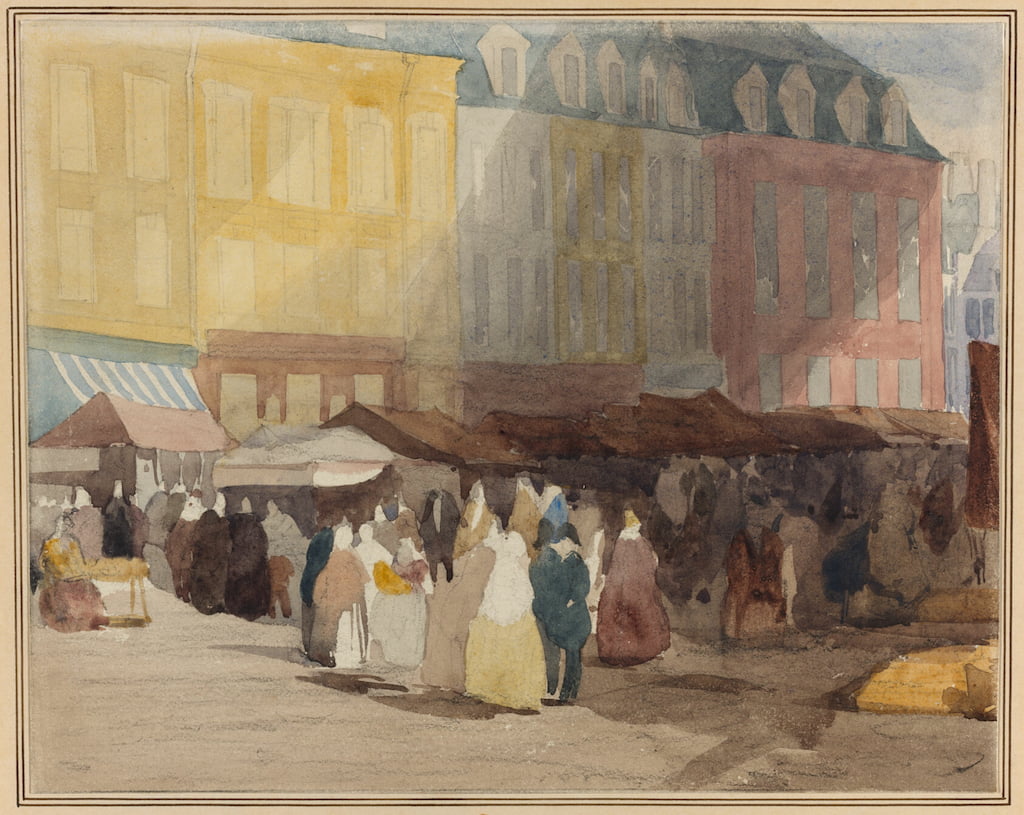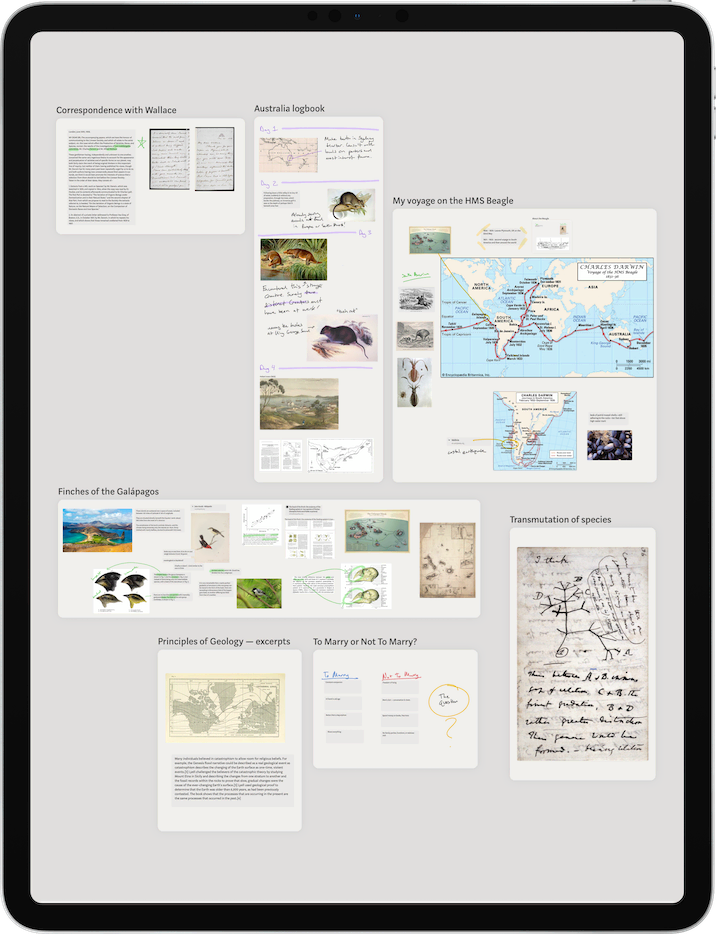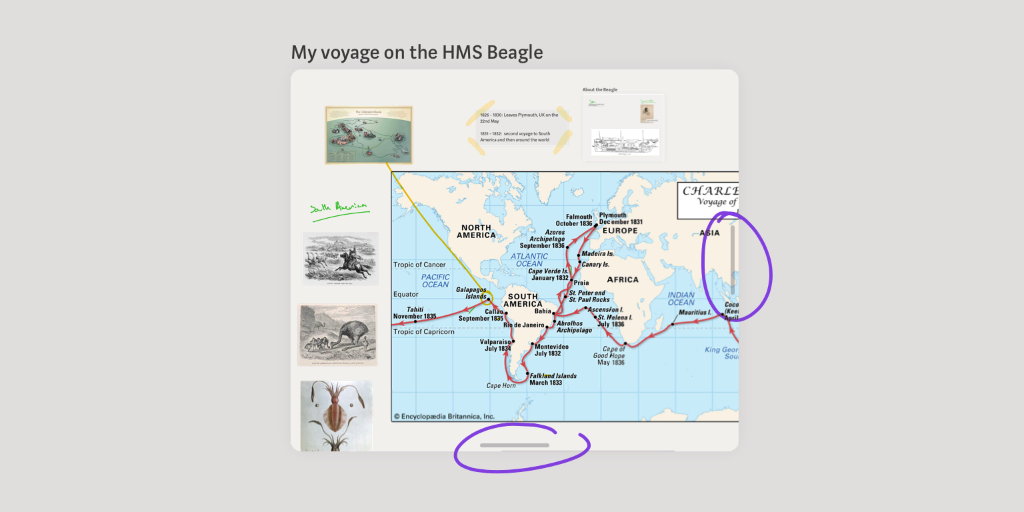017 // Jun 2021
Hello thoughtful people,
We just launched new pricing for Muse, and I’d like to hear what you think.
Briefly: casual use of Muse is free and membership starts at USD $3.99 per month. Pro members will continue to get the complete package including early access to beta features. Read the full announcement.

A French Market scene (1829), David Cox, Chicago Art Museum
We’re working hard to make our prices fair and within reach for as many people as possible, while also creating a sustainable, independent business. By paying for Muse, you help us stay niche, opinionated, and focused on your needs over the long term.
But in some ways selling pro software for the iPad remains an uphill journey, and there are many other challenges on pricing products in general which we discussed on the podcast.
What’s your take? Just reply to this email.
Happy musing,
-Adam
❤️
New in Muse
Board cards shape to their content
Rather than being a fixed size and aspect ratio, board cards now take on the shape of their content. So when zoomed out, you see a variety of shapes and sizes accordingly.

Since these board cards show their full contents, you can now tap or pinch to zoom into that exact spot on the board.
Many people have reported using this like a mini-map on larger boards: zoom out, scan the territory, then pick a specific spot to zoom back into.
This also means that board cards change size when you add and remove content. If you prefer a fixed size and shape, you can use the grab handles on the right and bottom to crop the card.

Note that boards created prior to Muse 1.7 are automatically cropped, because we didn’t want the update to disrupt your existing board layouts. If you want to make an older board shape to its content, drag out the two grab handles to their furthest extent.
Scaling Muse
In the last month we’ve spent a lot of engineering effort on “scaling” Muse. Many of you put a truly epic amount of content into this app, including gigabytes of data and tens of thousands of annotations, diagrams, and handwritten notes! Thus our engineering team (Julia and Adam) have been hard at work addressing out-of-memory crashes and performance issues for our most demanding members.
Thanks to all of you who are pushing Muse to its limits and for your detailed bug reports, which help us make the app more powerful and robust.
Podcast
Not-to-miss Metamuse episodes:
- Computers and creativity – Reflections on a grand vision from the past (Engelbart, Kay, etc) and what our current tools renaissance is getting right and wrong. With Molly Mielke of Figma and Notion.
- Thinking in probabilities – Everything you wanted to know about statistics, but were afraid to ask. With Taimur Abdaal of Casual, the probability-aware spreadsheet.
- Social media — Twitter is a great source of ideas, but how do you have a healthy relationship with engagement-driven social media? Plus the role of social media companies and government regulation. With Tobias-Rose Stockwell, who has published articles on the subject in Wired and The Atlantic.
What we’re reading: Dense Discovery
Dense Discovery is a lovingly-curated weekly newsletter on design, typography, architecture, emotional wellness, technology, and art.

The most recent issue links to a visualization of the age of buildings in the Netherlands; a book on creating deeper and more authentic personal relationships; a fun new typeface; a Wikipedia list of common misconceptions; and 3D-printed dirt houses.
What I like best about DD is that it embodies curiosity and an open mindset to learning about the world—all filtered through the distinctive taste of its creator Kai Brach.
And a fun bit of history: Dense Discovery was one of the email newsletters I took inspiration from when starting these Muse email updates back in 2018. Hard to remember that quality newsletters were a rare occurrence in the world before Substack!
Just for fun: Dorodango mud balls
Dorodango is the Japanese art of hand-making decorative spheres out of mud and other soil using only your hands… and time.

This creator details his process, with plentiful illustrator photos. I love the humble material, the attention to craft, and most of all that it requires patience—a rare skill in this frentic age.
